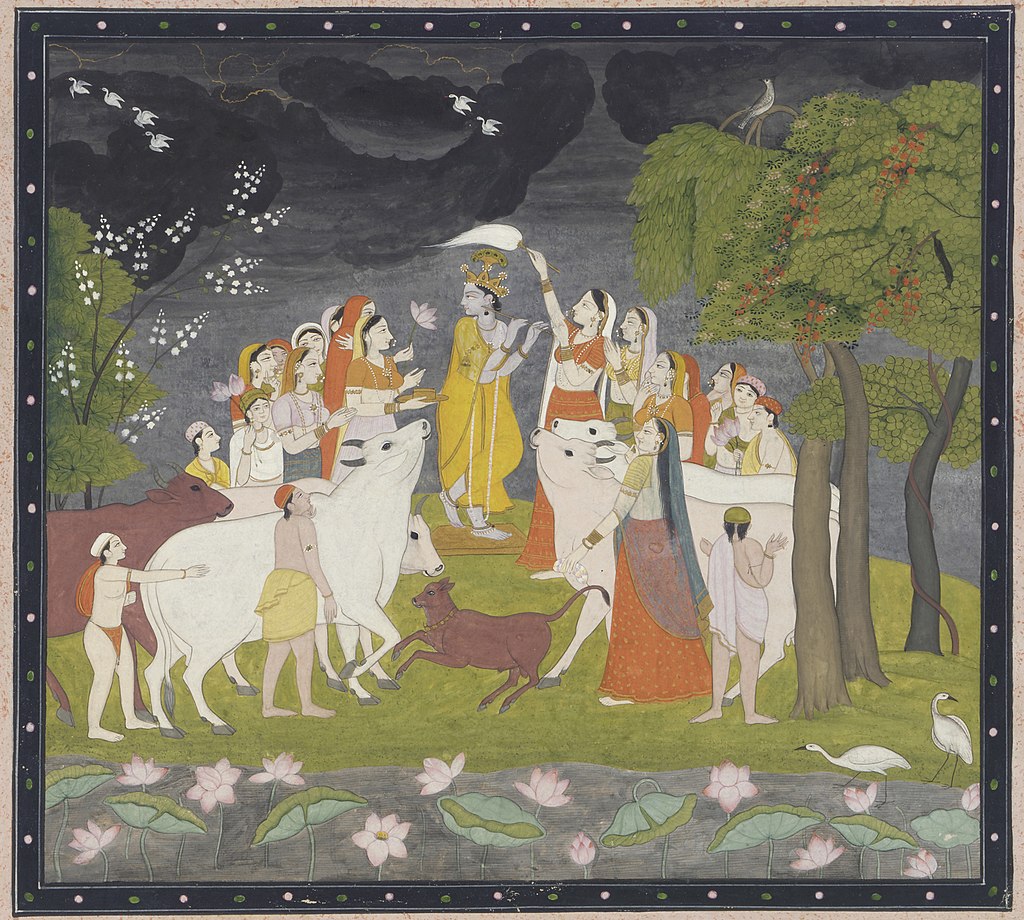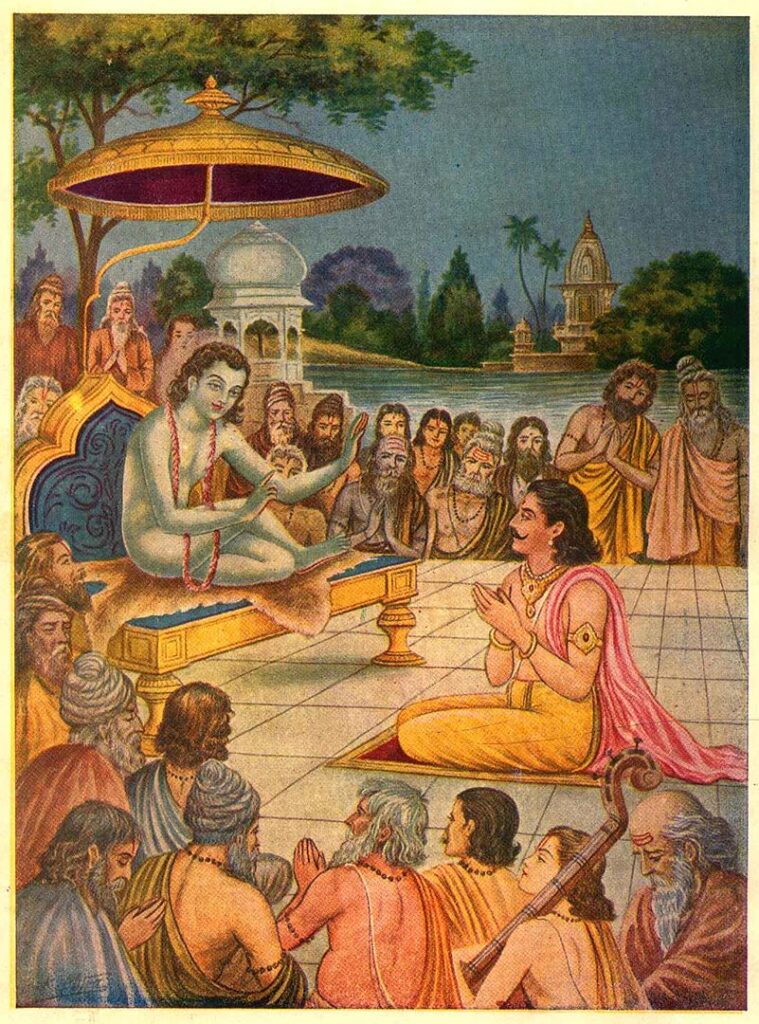
Shanta rasa is the mellow of divine love (Rasa) that falls within the purview of Narayana pujan (worship of Lord Narayana). This is a neutral state in which the devotee neither feels any fondness for his worshipable Lord Narayana nor does he have any attachment towards the world. He offers the Lord his love in a manner sanctioned by the scriptures. The indifference of the servant towards his Lord is the chief characteristic of this stage. Shanta rasa is the neutral stage where there exists attachment for Krishna in the mood of awe and veneration; there is complete detachment from all material desires; nonetheless, in Shanta rasa, there is also a lack of intimacy between the devotee and the Supreme Lord.
The bliss that is experienced in Brahman realization (brahmananda) by the impersonalists, or the pleasure of realizing the self (atmananda), experienced by the yogis steeped in meditation upon the inner self, is nothing compared to the delight felt in realizing the Supreme Lord. The beautiful form of the Supreme Lord is the source of all spiritual bliss. Devotees like Bilvamangala Thakura, Sukadeva Goswami, and Sarvabhauma Bhattacharya had attained nirvishesa brahma (impersonal brahman) through their pursuits of Jnana (speculative knowledge) but had rejected brahmananda (bliss in impersonal brahman realization) in favor of bhakti-rasananda, the nectarean divine bliss of devotion.
Those devotees who have severed their material attachments by dovetailing all their actions for the pleasure of the Supreme, but are yet to forsake completely the desire for liberation, become situated in Shanta Rasa.

Those who are atmaramas (rejoice in themselves) or elevated renunciants possessing unflinching faith upon the Supreme are situated in ‘Shanta rasa’. Foremost among such ‘atmarams’ are the four Kumarasa – Sanaka, Sanatana, Sanat and Sanandana. Originally, they were situated in an impersonal Brahman realization. But later, they became attracted to the enchanting beauty of Lord Narayana. Subsequently, they began worshiping the personal form of Lord Narayana, realizing Him to be the embodiment of transcendence.
Uddipanas (stimulants) and Vikaras (transformations) in Shanta Rasa
The following activities/entities stimulate the mood of Shanta rasa within a devotee: Studying principles of Upanishads, living in a solitary place, relishing the appearance of one’s spirituality, discussing philosophical truths, engaging in discussions regarding knowledge and learning, appreciating the universal form (viswarupa) of the Supreme Lord, debating upon Upanishads with persons of equal intellect and disposition, associating with jnana-Misra-bhaktas (devotees whose devotion possess mixed traces of speculative knowledge), the fragrance of Tulasi buds offered at the feet of the Lord, sound of conch shell, sacred mountains, holy forests, spiritually potent sites, the river Ganga, giving up material attachments, firm conviction that time is the destroyer of everything, etc

A devotee situated in Shanta Rasa manifests all the eight ecstatic transformations (asta sattvika vikara) except for devastation (pralaya). Hence these devotees may exhibit the following ecstatic transformations when their heart overflows with spiritual emotions – being stunned (stambha), perspiring (sveda), having the bodily hairs standing on their end (romancha), faltering of one’s voice (svara bheda), trembling (vepathu), fading of the body’s color (vaivarna), and tears (asru). Furthermore, the sattvika vikara with dipta-Lakshana, or the symptoms of vigorously shining, do not manifest in Shanta rasa.
Types of Shanta Rasa
The mood of a devotee situated in Shanta rasa can be categorized into two – sama (equipoised) and sandra (concentrated). A devotee, in asamprajnata samadhi, who is no longer associated with the mundane and rejoices in perceiving the Supreme Lord within his heart is said to be in ‘sama’. Whereas a devotee, in nirvikalpa samadhi, who has gained freedom from all avidya (nescience) and duality, and delights in perceiving the Lord face to face in his state of samadhi, is said to be in ‘sandra’.
Conclusion
Shanta rasa must be cultivated and accepted within the spiritual culture because one’s consciousness cannot be fixed upon the Supreme Lord in its absence. The Kadamba trees and cows of Vrindavan, sticks with which Krishna herds His cows – all of these belong to Shanta rasa, the mellow of neutrality in devotional service. Just as sound vibration is found in all material elements, similarly, the two qualities of Shanta rasa, namely firm faith in the Supreme Lord and detachment from all material desires, pervade all the other rasas (devotional mellows).